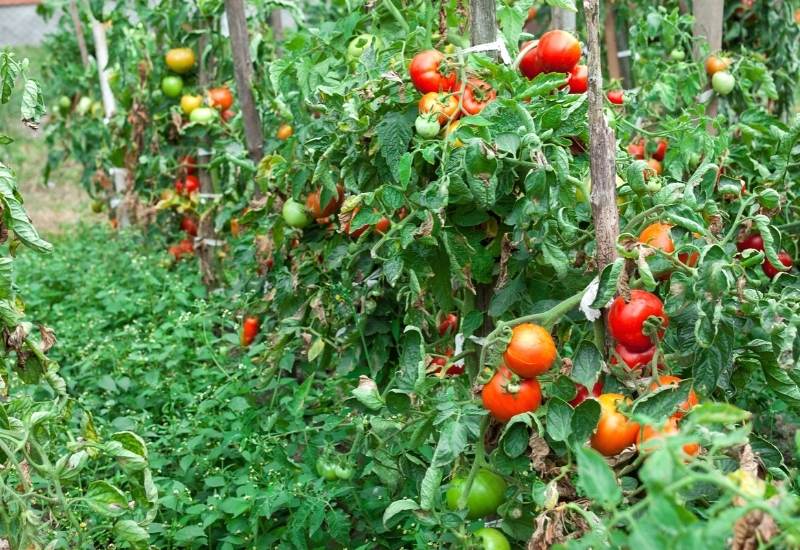
Are you patiently waiting for your tomato plants to grow, but nothing seems to be happening?
If you’ve been noticing that your tomato plants are not growing as quickly as they should be, there’s a reason for it. Tomatoes are a tropical warm-season plant with very particular needs. Most tomato varieties need 3 to 4 months of warm conditions (70 – 85 degrees F), moderate watering and plenty of fertilizer to grow flavorful fruits.
One of the most common reasons for slow tomato growth is that the soil isn’t warm enough. It may seem counterintuitive, but plants need warm soil in order to grow quickly – tomatoes can’t take advantage of cool temperatures like other plants because they have high water demands!
However If you have a short growing season with not enough days, there are a few things you can do to encourage fast growth that will produce an early harvest.
Luckily for you, we have some easy tips so that you can help make tomato plants grow quickly!
Let’s look at what your tomatoes need to thrive, and how to make your tomatoes grow faster.
How Long Do Tomatoes Take To Grow?
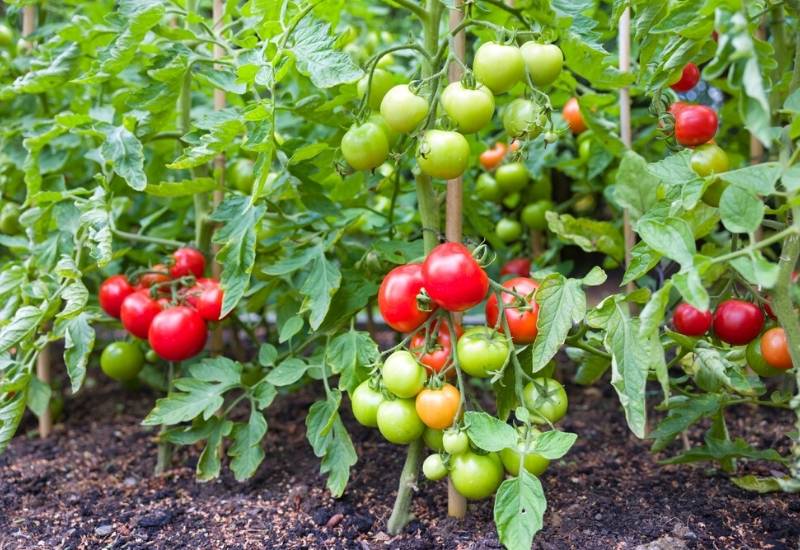
Before you plant your tomatoes, it is important to know how long they will take to grow so you will not have unreasonable expectations about how fast they should be growing.
A packet of tomato seeds will list their “days to maturity” which tells you when the first tomatoes will usually be ripe for picking. This is usually counted from when the tomatoes are transplanted into the garden.
Tomatoes are started 6 to 8 weeks before transplanting, so add about 40 to 55 days to the “days to maturity” to determine the total growing time of your plants.
Most tomatoes are ready for harvest in about 60 to 80 days. These varieties of tomatoes are often referred to as midseason tomatoes. Late season tomatoes take up to 100 days, and some early season varieties are ready in 45 to 55 days.
12 Tips To Make Your Tomato Plants Grow Faster And Accelerate Your Harvest
A tomato from the grocery store cannot compare to one picked fresh off the vine in your own garden.
Yet it is frustrating to watch your tomato plants grow so slowly as you wait excitedly for a harvest, wondering if the tomatoes will ripen before the first fall frost.
Here are 12 tips on how you can make your tomato plants grow faster and get juicy red fruit sooner than ever before!
1: Choose An Early-Maturing Tomato Variety
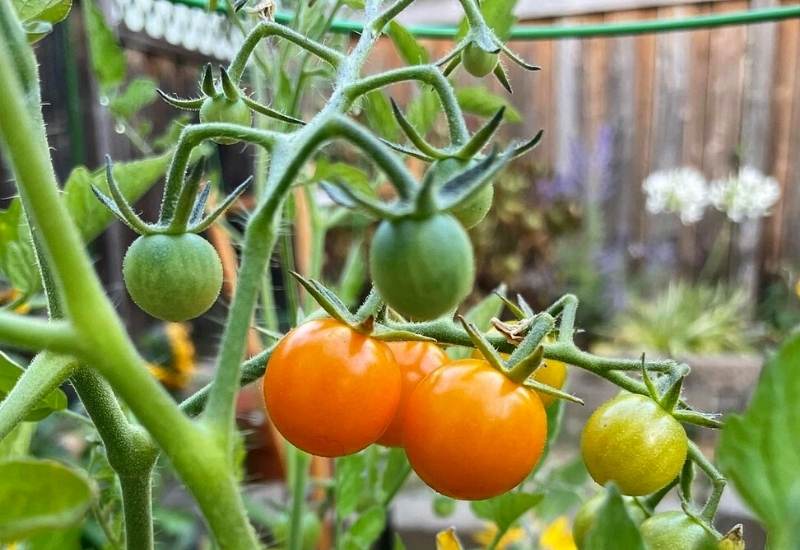
If you tomatoes are taking too long to mature, then the first thing you could do is choose a fast-growing variety. Early tomatoes are ready in under 60 days after transplant and are quick growing to give you a fast harvest. Here are some suggestions for fast growing varieties:
2: Keep Your Tomatoes Warm
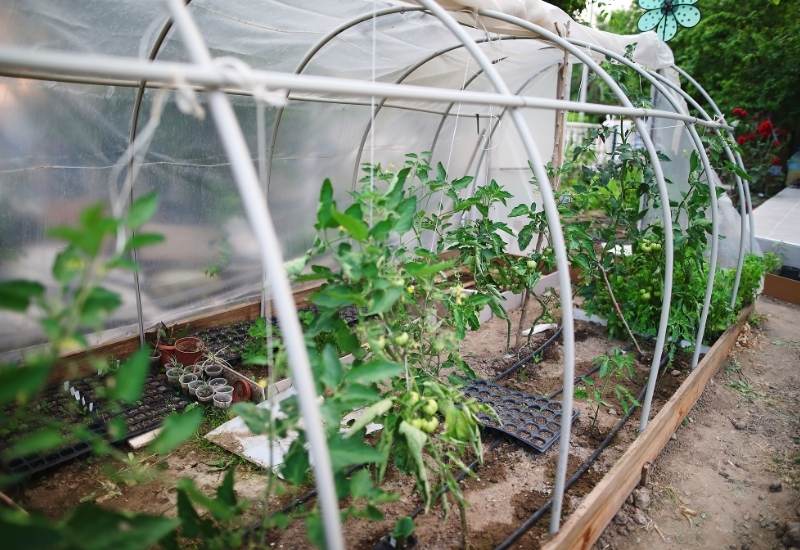
The most important factor in how to make tomatoes grow faster is temperature. The warmer your tomato plants can be grown, the more quickly they will produce fruit.
Night time temperatures below 10°C (50°F) will significantly impede their growth. The ideal daytime temperature for growing tomatoes is between 21°C and 29°C (70°F to 85°F). But in general, the warmer it is outside (ideally at least 65 degrees Fahrenheit), the faster your tomatoes will grow!
To increase the soil temperature, place straw around your plants which will also provide extra insulation against cold temperatures. And, if you live in a colder climate consider covering your plants with plastic sheets which should not only protect them from cold air currents but also trap their own heat and moisture.
If your tomatoes are not growing, it’s likely because they need more heat. One way you can increase the temperature of your tomato plants is
3: Use Black Plastic Mulch
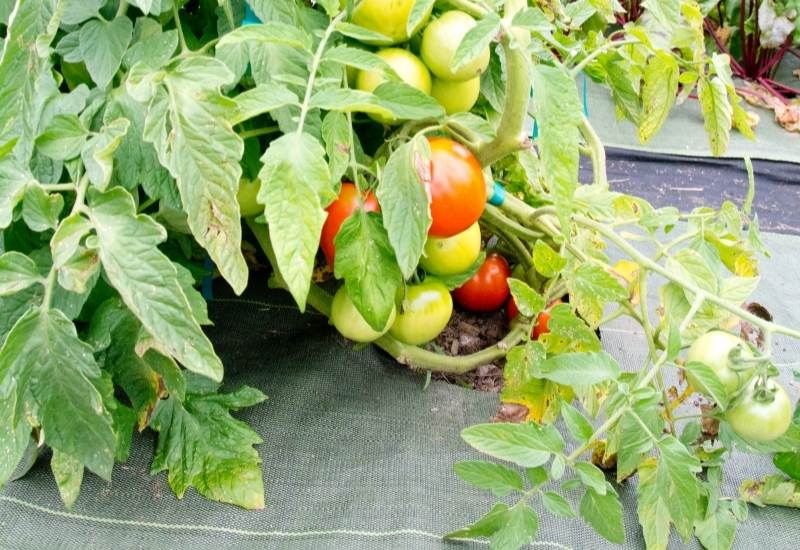
While tomatoes like a warm ambient temperature, they also grow faster when the soil is warm. Laying down black plastic in your garden prior to transplanting will increase the temperature of the soil by about 5°C (41°F).
This will really help the tomatoes in the spring and again as the temperatures begin to cool in the fall.
Make sure you anchor the edges of your plastic mulch well to keep if from blowing in the wind and damaging your tomato plants. Also, be sure to monitor the moisture under the plastic as the extra heat casuses the soil to dry out.
The downside of black plastic mulch is the negative environmental impact. Not only is there the manufacturing to consider, but the plastic can potentially leach chemicals into your soil when exposed to the hot summer sun,
and it will probably end up in the land fill at the end of the year. Treat your black plastic carefully and you might be able to reuse it for a few years.
4: Don’t Apply Organic Mulch Too Early
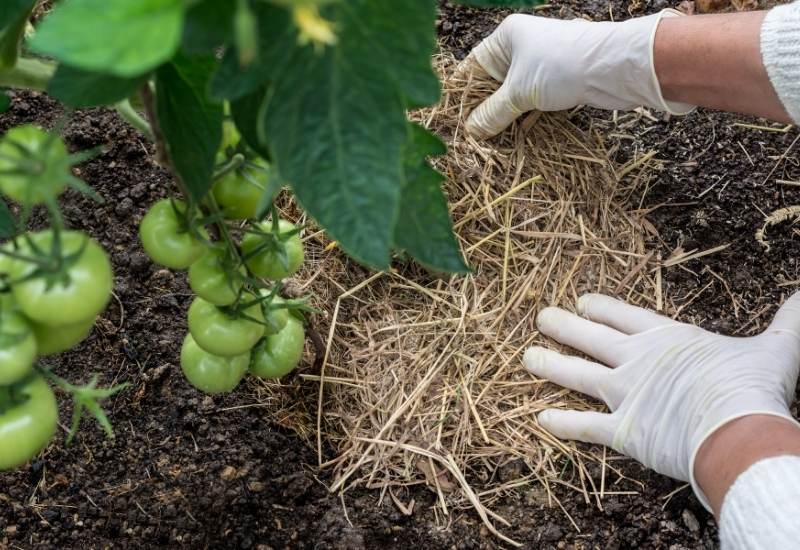
Organic mulch has a number of advantages to the garden, but it can slow the growth of your tomatoes when applied too early.
Organic mulch, such as straw, newspaper, or carboard, is well known for its insulating factor and it will keep the soil moist and cool during the hot summer.
This might significantly slow the growth of your tomatoes. If you do apply an organic mulch, consider waiting until the heat of summer is at its max.
5: Provide Lots Of Light
As well as heat loving, this tropical plant also grows fastest with lots of sunlight. Most tomato varieties need at least 6 hours of sunlight per day, but more is always better. If you can, ensure your tomatoes are getting at least 8 hours of sunlight per day.
If you are growing your tomatoes indoors, remember that artificial light (even from a grow light) is about half as effective as natural sunlight. Try to give your indoor tomatoes around 16 hours of aritificial light per day.
6: Water Carefully
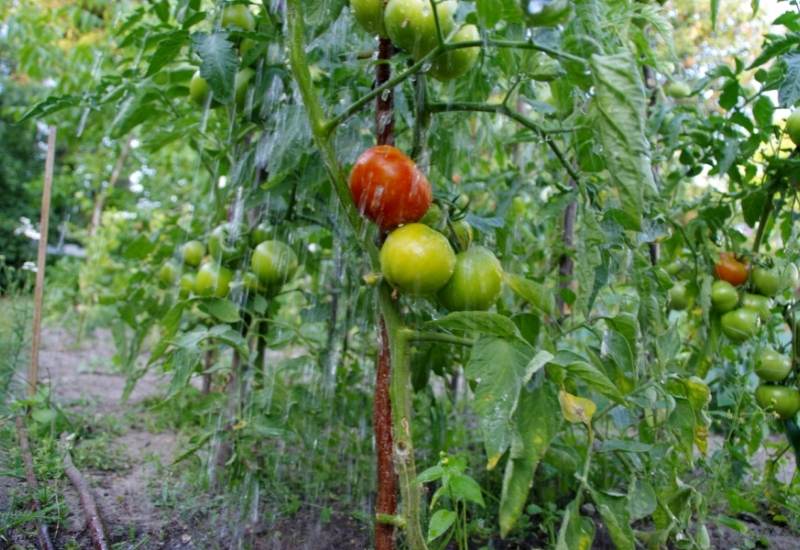
Both underwatering and overwatering can slow the growth of your tomatoes. When underwatered, the plant won’t be able to absorb the nutrients it needs for expedient growth.
Overwatering will inhibit air circulation around the roots, and the saturated roots will be stunted and won’t be able to absorb enough water, or they will rot.
So, how much water is the right amount? The best way to tell if your tomatoes are getting enough water is to stick your finger into the soil to about 2.5 cm to 5 cm (1 inch to 2 inches). If the soil is dry, it will need some water. If you feel the soil is moist, check again tomorrow.
Remember that soil in pots dries out faster than in the garden, so pay extra attention to the moisture level of your potted tomatoes.
It is a good idea to stop watering your tomatoes around the end of the July. This lack of water encourages your tomatoes to ripen and can speed your harvest.
7: Keep Your Tomato Well Fed
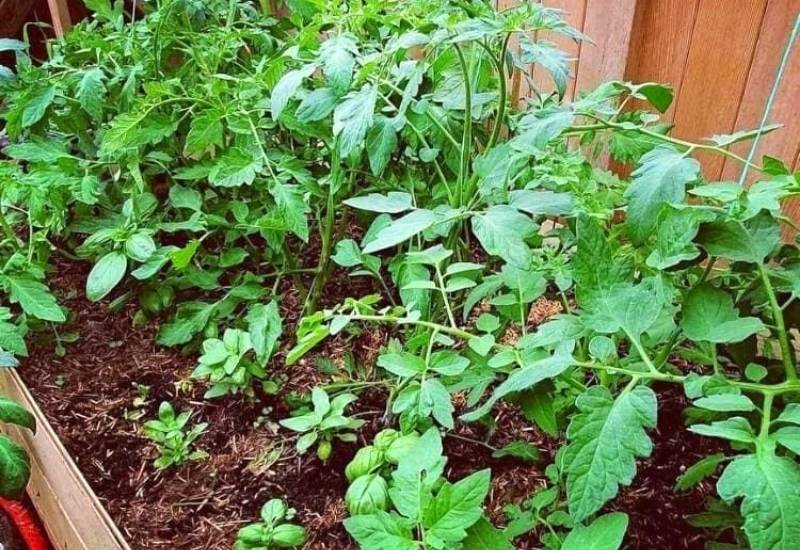
Tomatoes are heavy-feeders, meaning they need a lot of nutrients to grow quickly and healthy and lack of nutrients will cause them to grow slowly.
If your tomatoes are growing very slowly, consider having your soil tested to see if it is deficient in any nutrients. A common sign of nutrient deficiency besides impeded growth is when the leaves of the plant start turning yellow.
To ensure your tomatoes have enough nutrients, work lots of compost into the bed. Also, you can add a good helping of compost beneath into each hole under your transplants.
Nitrogen is one nutrient that is commonly lacking in the garden. Companion planting with legume crops such as peas or beans will add nitrogen to the soil.
Also, if you have chickens or a few equines, adding their manure to the compost bins is a natural souce of nitrogen.
8: Harden Off Your Tomato Plants Before Planting
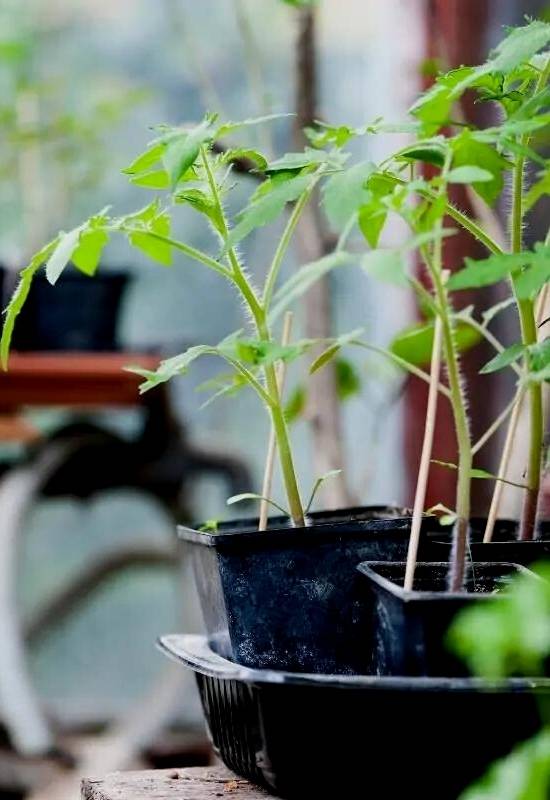
Transplant shock is another common cause of slow growing tomatoes. This is when newly transplanted tomatoes have to adjust to their new environment and are delayed or stunted as a result.
To keep your tomato plant healthy, it’s best to harden off your transplants before planting by putting them outside during the day for extended periods as temperatures start getting warmer. This will gradually acclimatize them to their new environment so that they’re able to withstand sudden changes in weather better.
Begin hardening off your tomatoes about a week prior to transplant. To harden off your tomatoes, place them in a protected spot for a few hours a day, and gradually increase their exposure to the outdoor over the week. Before you plant them in the garden, make sure they are fully acclimated to the conditions of your garden.
When you put your transplants into the garden, you can bury them to the first set of true leaves. This will encourage good root growth which will mean lots of water and nutrients for good, fast growth.
9: Provide Adequate Space
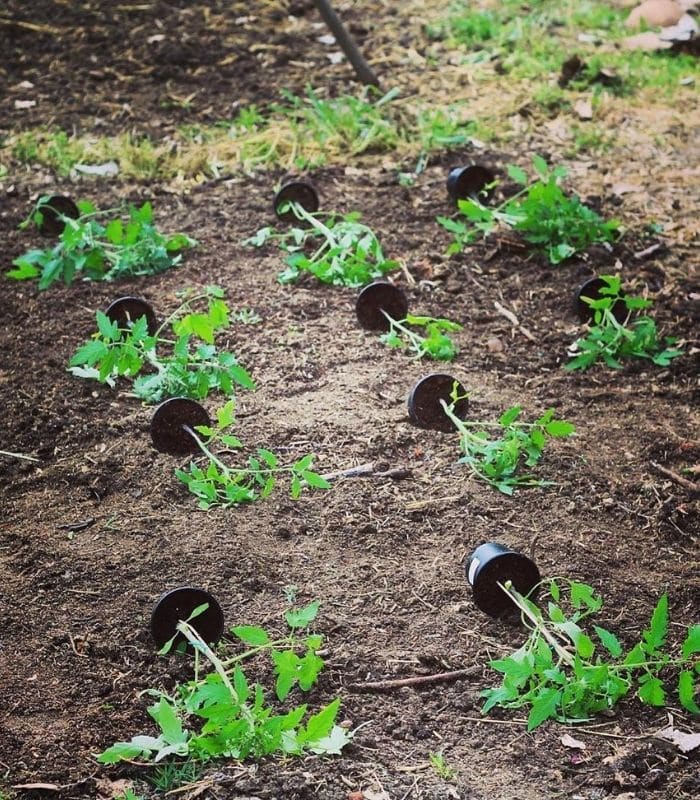
Make sure you do not crowd your tomato plants. Giving them enough space will ensure they have enough sunlight, water, and nutrients for fast growth and they will not have to compete with their neighbors. Check how large your particular variety grows and space your plants accordingly.
This will also provide good air circulation amongst the plants and will reduce the chance of diseases and pests (see Tips 11 and 12 below).
10: Trellis Indeterminate Varieties
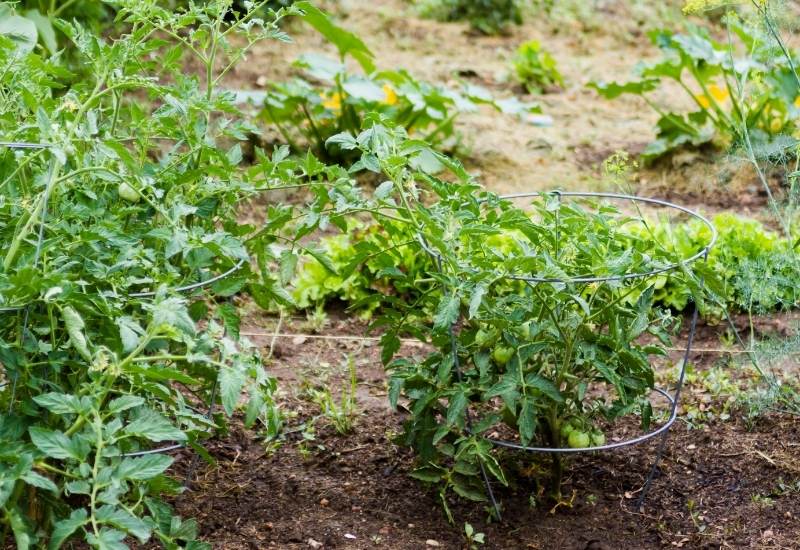
To ensure your indeterinate varieties have enough space, make sure your provide sturdy trellising. Some indeterminate tomatoes can grow an impressive 4 meters (12 feet).
Keeping the long plants off of the ground will let in the maximum amount of light which will hasten ripening.
11: Keep Bugs At Bay
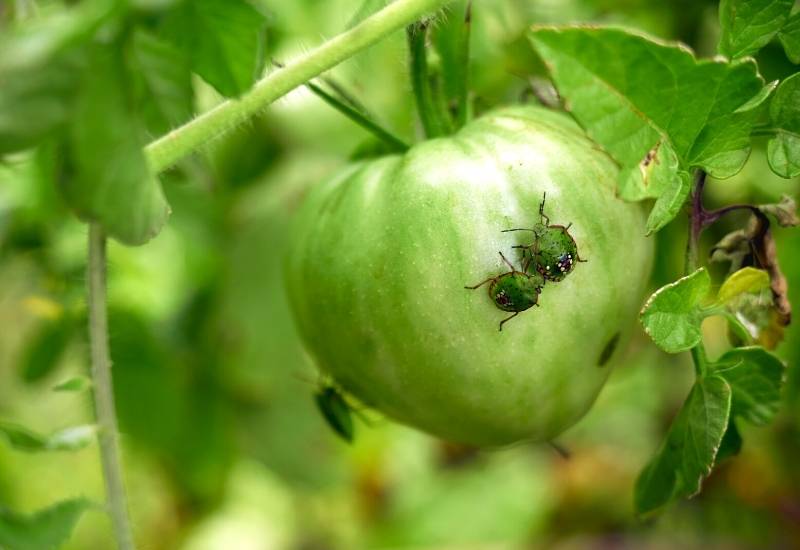
There are many insects that feast on tomato plants, such as slugs, whiteflies, hornworms, and aphids. If they don’t completely devour your plant (like a hungry hornworm is apt to do), they will suck valuable nutrients from the plant and slow its development.
If you see signs of insect damage, try to determine which critter you have and act accordingly.
The best way to save your tomatoes from insects is to deter them in the first place. Companion planting tomatoes with crops such as buckwheat, Allyssum, or clover will attract beneficial insects that will eat all the bad bugs.
Floating row covers can also protect your tomatoes from infestations. Tomatoes are self-pollinating, meaning each flower contains both male and female parts, so you can keep floating row covers on for the entire season if needed.
12: Watch Out For Disease
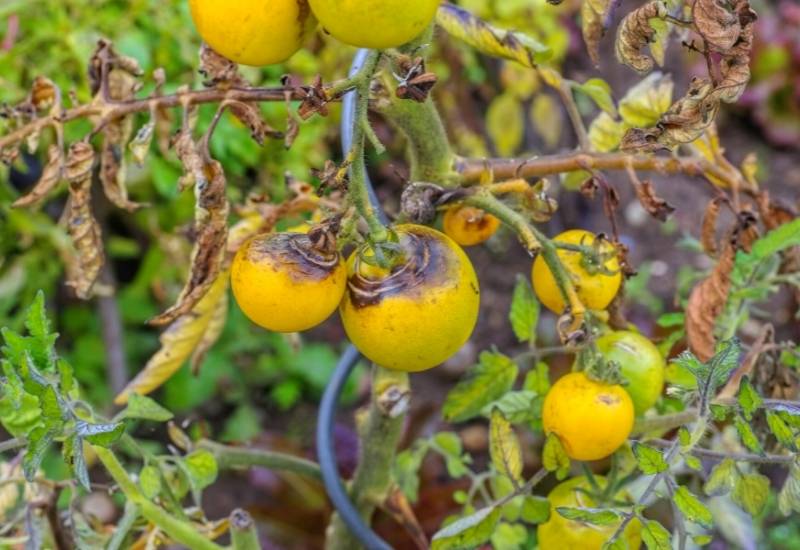
Tomatoes are susceptible to many diseases, all of which will slow growth if they don’t kill the plant outright. Some disease you are likely to find on your tomatoes are blight, damping-off, and bacterial leaf-spot.
If you find your plants are getting sick, research online of contact a garden centre so you know what you are dealing with and the best way to treat it.
Prune off any diseased leaves or stems that you find. Unfortunately, it might be necessary to completely remove a plant that is especially sick.
Many fungal issues will be kept at bay by keeping the growing environment dry by allowing good air circulation and light to penetrate. Again, spacing out your plants and being careful with water will really help keep your plants healthy.
Enjoying Your Early Harvest
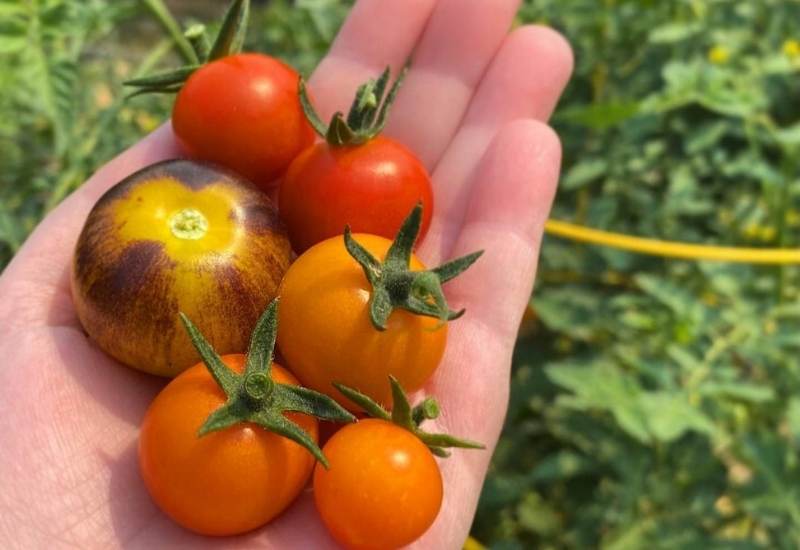
While we should never artificially stimulate the growth of out plants, we can enourage fast healthy growth by providing ideal growing conditions and keeping our plants healthy.
By following these tips, you will hopefully have fast growing tomato plants that produce a delicious harvest as early as possible.
If in doubt, consider talking to your plants. Many gardeners say that it works wonders!

Written By
Amber Noyes
Amber Noyes was born and raised in a suburban California town, San Mateo. She holds a master’s degree in horticulture from the University of California as well as a BS in Biology from the University of San Francisco. With experience working on an organic farm, water conservation research, farmers’ markets, and plant nursery, she understands what makes plants thrive and how we can better understand the connection between microclimate and plant health. When she’s not on the land, Amber loves informing people of new ideas/things related to gardening, especially organic gardening, houseplants, and growing plants in a small space.

I have really enjoyed your teachings
I say thank you boss